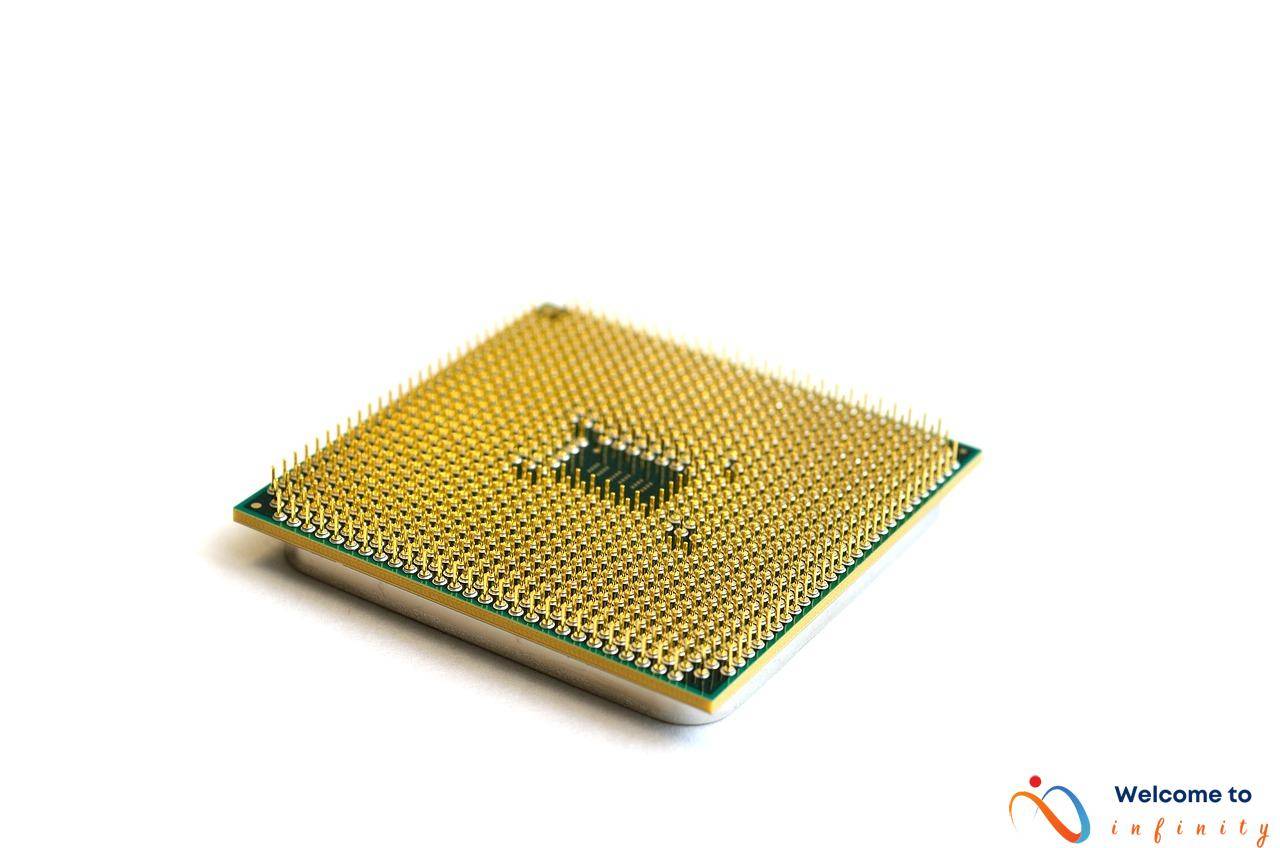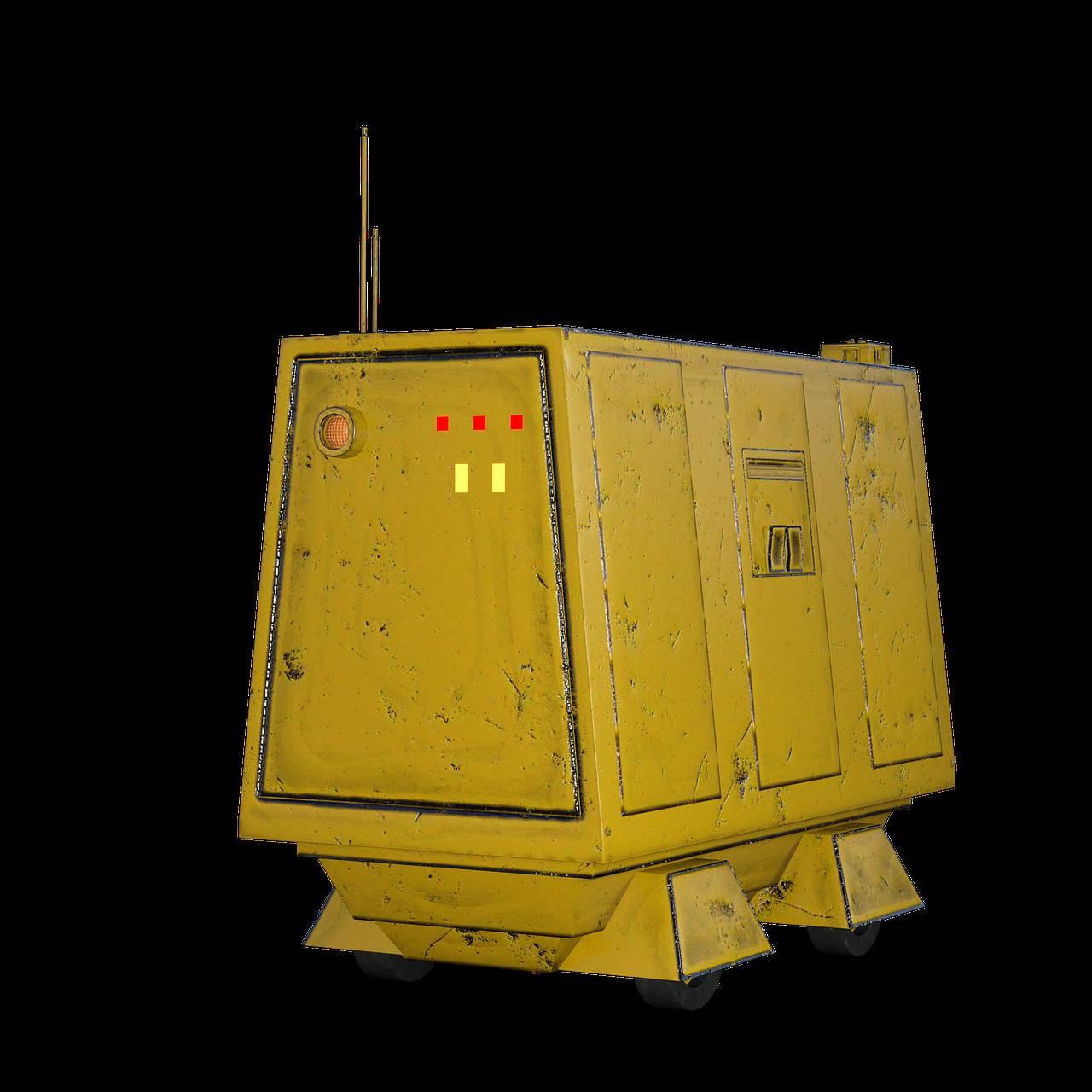The agriculture industry has always been a labor-intensive and time-consuming industry, requiring farmers to put in endless hours to ensure high crop yields. However, with the integration of Artificial Intelligence (AI) and robotics, farming practices are revolutionizing, making the farming experience more efficient and less time-consuming. AI and robotics technologies offer a range of benefits that can help farmers increase their crop yields and reduce costs while minimizing human errors.
The integration of AI and robotics in agriculture brings a new level of efficiency and automation. With smart sensors, drones, and robots, AI can help farmers collect critical data about their crops, such as soil moisture levels, plant growth, and pests. This information helps farmers make more informed decisions about when to water, fertilize, and treat crops, increasing crop yields and reducing wastage. Robotics technology is also driving innovation in the industry by automating manual tasks such as planting, irrigation, and harvesting. This automation technology can help farmers save time, reduce labor costs, and improve the precision and accuracy of their farming practices.
The use of AI and robotics in agriculture is a game-changing technology that will revolutionize the industry in the years to come. From crop monitoring and precision farming to automated harvesting, AI and robotics have already started to transform the farming landscape. With the advent of ethical and regulatory challenges, the industry is rapidly changing to adapt to this new technology to ensure a just transition for all stakeholders.
The Need for AI and Robotics in Agriculture
In traditional manual farming practices, farmers face numerous challenges such as unpredictable weather patterns, inefficient use of resources, and labor-intensive tasks. These limitations often lead to reduced yields, increased production costs, and a lack of real-time crop data necessary for optimal decision-making. However, the integration of AI and robotics in agriculture provides a promising solution to these challenges.
AI-powered tools can analyze a vast amount of data sets that provide insightful information about crop health, weather patterns, and soil quality. By analyzing this information, farmers can make informed decisions about crop management, irrigation, fertilization, and minimize the use of resources, reducing production costs. Additionally, robotics can automate labor-intensive tasks such as planting, weeding, and harvesting, which increases efficiency and enables farmers to focus on more strategic activities that require human expertise.
Furthermore, AI and robotics provide efficient and accurate crop monitoring solutions. Traditionally, crop monitoring was conducted by manual scouting, which was often an inaccurate and time-consuming process. With AI-powered tools such as drones and sensors, farmers can obtain real-time data about crop health and productivity such as pest infestation, disease identification, and plant stress, allowing them to take immediate actions to mitigate the problems.
In conclusion, AI and robotics offer enormous potential in solving the inherent challenges and limitations of manual farming practices. These technologies provide innovative solutions to traditional farming methods, enabling farmers to increase yields, reduce production costs, and optimize resource utilization. The integration of AI and robotics in agriculture is critical to ensuring sustainable and efficient farming practices for a growing population.
Applications of AI and Robotics in Agriculture
The integration of AI and robotics in the agriculture industry has led to a significant improvement in farming practices. The use of drones, robots, and sensors has become crucial for precision farming and crop monitoring. Additionally, automated harvesting using robotics has made farming more efficient and cost-effective.
The implementation of precision agriculture practices has only been made possible through the integration of AI and robotics. Drones are now used to provide real-time data on crop health, soil moisture levels, and plant growth. This information enables farmers to make better decisions about irrigation, fertilization, and pest control.
Robotics has been instrumental in reducing the manual labor required for farming. By automating the harvesting process, the industry has seen significant improvements in crop yields, efficiency, and cost-effectiveness. Automated harvesting using robotics is still a relatively new concept, but it's already made a significant impact on crop yields.
Sensors are also now a critical element in precision agriculture, providing farmers with crucial information on factors such as soil moisture levels, temperature, and nutrient levels. This information helps farmers take the guesswork out of the farming process and make data-driven decisions.
The combination of AI and robotics in agriculture has led to a significant reduction in waste, through more streamlined and efficient farming practices. This has also helped reduce the industry's carbon footprint, making it more environmentally sustainable.
In summary, the use of drones, robots, and sensors has significantly improved precision farming and crop monitoring. Additionally, automated harvesting using robotics has made farming more efficient and cost-effective. The application of AI and robotics in agriculture has led to a significant reduction in waste and a more sustainable industry overall.
AI-driven Crop Monitoring
In traditional farming practices, crop monitoring is done manually by farmers, which can be time-consuming and prone to inaccuracies. With the integration of Artificial Intelligence (AI) and robotics in agriculture, crop monitoring can be revolutionized. AI-driven crop monitoring involves the use of sensors and AI algorithms to collect and process data on crop growth, soil conditions, and weather patterns to optimize crop yields and minimize losses.
One of the primary applications of AI in crop monitoring is predicting crop yields. AI algorithms can analyze historical data on crop growth, weather patterns, and soil conditions to predict the potential yield of a crop. This allows farmers to make data-driven decisions on when to harvest their crops, ensuring optimal yields and minimizing losses.
AI can also help farmers identify diseases in crops. By analyzing images of crops taken by drones or robots equipped with cameras, AI algorithms can detect specific patterns that indicate the presence of diseases. This early detection allows farmers to take necessary measures to prevent the spread of the disease and minimize crop losses.
Optimizing crop growth is another area where AI can assist in crop monitoring. By analyzing data on soil moisture, temperature, and other environmental factors, AI algorithms can identify areas where crops are not growing optimally and suggest changes to the farming practices to increase crop growth.
Overall, AI-driven crop monitoring has the potential to revolutionize traditional farming practices, making them more efficient and precise. By automating the crop monitoring process, farmers can optimize their crop yields, minimize losses, and increase their profitability.
The Role of Robotics in Automated Harvesting
Automated harvesting is a prime example of how robotics is revolutionizing the agriculture industry, enabling farmers to improve crop yields while reducing time and labor costs. Robotic harvesters are equipped with sensors and cameras that can detect ripe fruits and vegetables, navigate through fields, and pick and sort produce with precision and speed.
The use of robotic harvesters has several advantages, including the ability to harvest crops at peak ripeness, reducing waste and spoilage. They also eliminate the need for manual labor, which can be costly and difficult to source during peak harvesting seasons. With robotic harvesters, farmers can significantly streamline their operations and increase efficiency, ultimately increasing profits.
Moreover, robotic harvesters can be programmed to minimize damage to crops, reducing losses due to bruising or mishandling. This feature makes robotic harvesters an excellent choice for fragile crops, such as berries or delicate fruits.
Finally, robotic harvesters can improve the quality and safety of produce by reducing the human factor in the harvesting process. They reduce the likelihood of contamination and allow for more rigorous quality control measures.
Overall, the integration of robotics in automated harvesting is a positive development for the agriculture industry, enabling farmers to increase efficiency, reduce labor costs, and improve crop yields, while maintaining high-quality produce standards.
The Use of Drones in Precision Agriculture
One of the essential applications of AI and robotics in agriculture is the use of drones for precision agriculture. Drones equipped with sensors and cameras can provide real-time data on crop health, soil moisture levels, and plant growth, leading to improved crop management and higher yields.
By using drones, farmers can identify specific areas of a field that require targeted treatment, such as pesticide or fertilizer application, which leads to precision spraying and reduces costs. This technology saves farmers time and energy which speeds up the overall harvesting process while increasing profits.
- Drones can monitor crop health and prevent potential crop failure by identifying early signs of disease or nutrient deficiencies
- The technology can determine how much crop cover there is and calculate what happens to rainfall, which is critical for proper irrigation
- Drones can create 3D models of the field, which provides a visual interpretation of the crop's current state which can be turned into valuable insights
The use of aerial drones in agriculture is growing, and it is forecasted to continue expanding in the coming years. As the technology becomes more affordable and advanced, more farmers will likely use these tools, leading to better and more efficient agriculture techniques.
The Future of AI and Robotics in Agriculture
The future of AI and robotics in agriculture is bright and full of potential. As technology continues to improve, we can expect to see more innovations in farming practices that involve the integration of AI and robotics. This will result in increased efficiency, reduced costs, and greater sustainability.
One significant impact of the continued integration of AI and robotics in farming will be the ability to produce more food with fewer resources. With an ever-growing population and limited land for farming, this is an essential development. Precision agriculture techniques enabled by AI and robotics will enable farmers to optimize crop yields, lower inputs and energy usage, and reduce waste. By using drones and other AI-powered technologies to track crops and livestock, farmers will also be able to detect problems earlier and monitor growth more effectively.
Another significant benefit of the increased use of AI and robotics in agriculture is the potential to reduce the environmental impact of farming practices. By optimizing planting and harvesting, preventing pests, and reducing the usage of pesticides and herbicides, we can reduce the number of chemicals in the soil, air, and water. Precision agriculture can also decrease emissions and energy usage per crop, which can help to reduce the carbon footprint of farming even further.
Nevertheless, the increased integration of AI and robotics in agriculture does raise some concerns. One of the most significant ethical issues concerns the potential for technology to exacerbate existing inequalities in the industry. For example, smaller farms or rural communities that lack access to advanced technology may be left behind as larger, more prosperous farms embrace the latest advancements in AI and robotics. Therefore, it is crucial to ensure that the benefits of this technology are accessible to all, regardless of their location or resources.
In summary, the continued integration of AI and robotics in the agriculture industry will revolutionize farming practices worldwide. The advancements we've seen so far indicate that we can expect to see reductions in costs, increased efficiency, and environmental benefits. However, it is crucial to ensure that ethical issues and potential job displacement concerns are addressed as we move forward with this technology. By doing so, we can ensure that AI and robotics in agriculture are a net positive for all stakeholders involved.
The Challenges and Limitations of AI and Robotics in Agriculture
The integration of AI and robotics in agriculture has the potential to revolutionize farming practices and increase efficiency, but it also poses ethical and regulatory challenges. One of the main concerns is the displacement of agricultural workers due to increased automation. While automation may improve efficiency and reduce labor costs, it also raises questions about the social impact on these workers.
Another challenge is the potential for AI and robotics to reinforce existing inequalities in the agriculture industry. Farmers with the financial resources to invest in these technologies may have a competitive advantage over those who do not. This creates an uneven playing field, causing concerns about access to technology and resources.
Furthermore, there are also ethical considerations surrounding the use of AI and robotics in agriculture. These technologies could lead to significant changes in the way farming is conducted, potentially altering the very nature of agricultural work. For instance, robotic harvesting can replace human labor, but it also raises questions about the moral implications of replacing humans with machines.
Finally, the use of AI and robotics in agriculture also poses regulatory challenges. These technologies can generate large amounts of data about crops, soil, and weather conditions, raising concerns about data privacy and ownership. Regulations may need to be implemented to ensure farmers have control over their data and that it is not misused by tech companies.
Overall, while the integration of AI and robotics in agriculture has the potential to increase efficiency and productivity, it also poses significant challenges and limitations that need to be carefully considered and addressed.
addressing Ethical and Regulatory Concerns
The integration of AI and robotics in agriculture has the potential to revolutionize farming practices, but it also raises ethical and regulatory concerns. One of the main ethical concerns is the impact on animal welfare. As AI and robotics are used to automate animal husbandry practices such as feeding and milking, there is a risk of neglecting the animals' well-being. To address this concern, stakeholders can develop AI and robotics systems that monitor and respond to animal behavior and health.
Another ethical concern is the potential for environmental harm. Precision farming practices enabled by AI and robotics, such as using sensors to optimize irrigation and fertilizer use, have the potential to reduce environmental impact, but they can also have unintended consequences. For example, excessive use of chemicals and pesticides can harm soil health and biodiversity. To address this concern, stakeholders can develop AI and robotics systems that use data analytics to optimize crop management practices with an eye towards minimizing environmental impact.
Regulatory concerns are related to safety and liability. As AI and robotics become more integrated into farming, there is a risk of accidents or malfunctions that can harm humans or animals. Additionally, there is a risk of liability disputes when AI- and robot-assisted farming practices cause harm to third parties. To address these concerns, stakeholders can develop regulations and standards that ensure the safe and responsible use of AI and robotics in farming. These regulations should cover the design and testing of AI and robotics systems, as well as the roles and responsibilities of different stakeholders in ensuring safety and liability.
Overall, addressing ethical and regulatory concerns in AI and robotics-enabled farming will require collaboration and dialogue among stakeholders including farmers, technology companies, regulators, and consumers. By working together, we can ensure that AI and robotics are used in a way that promotes ethical and responsible farming practices while also driving innovation and efficiency.
navigating Potential Job Displacement
While the integration of AI and robotics in agriculture promises to streamline farming practices and enhance productivity, it may also lead to job displacement in the long term. With greater automation in fields such as harvesting and crop monitoring, there is a growing concern about the future of agricultural jobs.
According to a report by the Centre for European Policy Studies, the increasing use of robotics and AI in agriculture could lead to the displacement of up to 75% of agricultural jobs in some regions. This means that farmers and farmworkers could be out of work as machines take over tasks such as planting, watering, and harvesting.
However, it is important to remember that automation also creates new job opportunities in areas such as programming, maintenance, and repair of machines and software. It is crucial to plan ahead and explore alternative employment pathways for displaced workers.
Stakeholders can ensure a just transition for all workers by providing training programs and education to help them acquire new skills and knowledge. This will enable them to transition into new roles within the industry or pursue alternative careers.
Collaboration between government agencies, educational institutions, and the private sector is necessary to establish programs that will support workers through the transition and ensure fair treatment for those who are displaced. These initiatives should consider the needs and interests of all stakeholders and prioritize the well-being of workers and communities.
Furthermore, efforts should be made to address regional disparities in job displacement and ensure that disadvantaged communities are not disproportionately affected by automation. A proactive approach is necessary to prevent social and economic upheaval and promote a smooth transition to a more automated farming industry.












